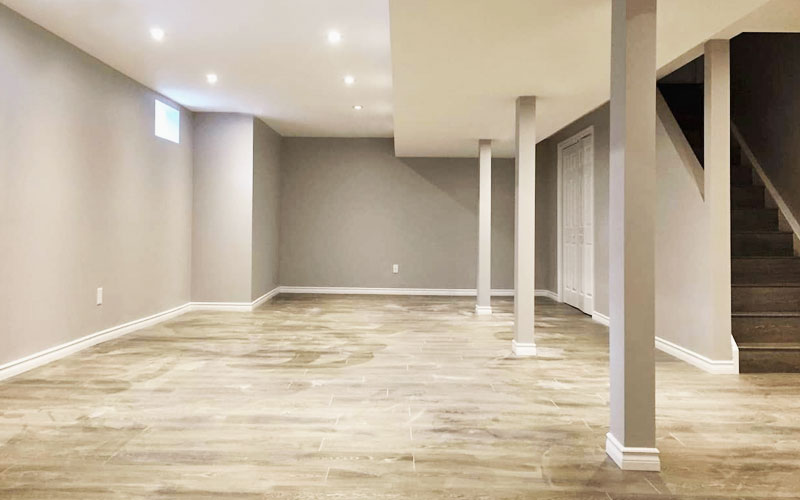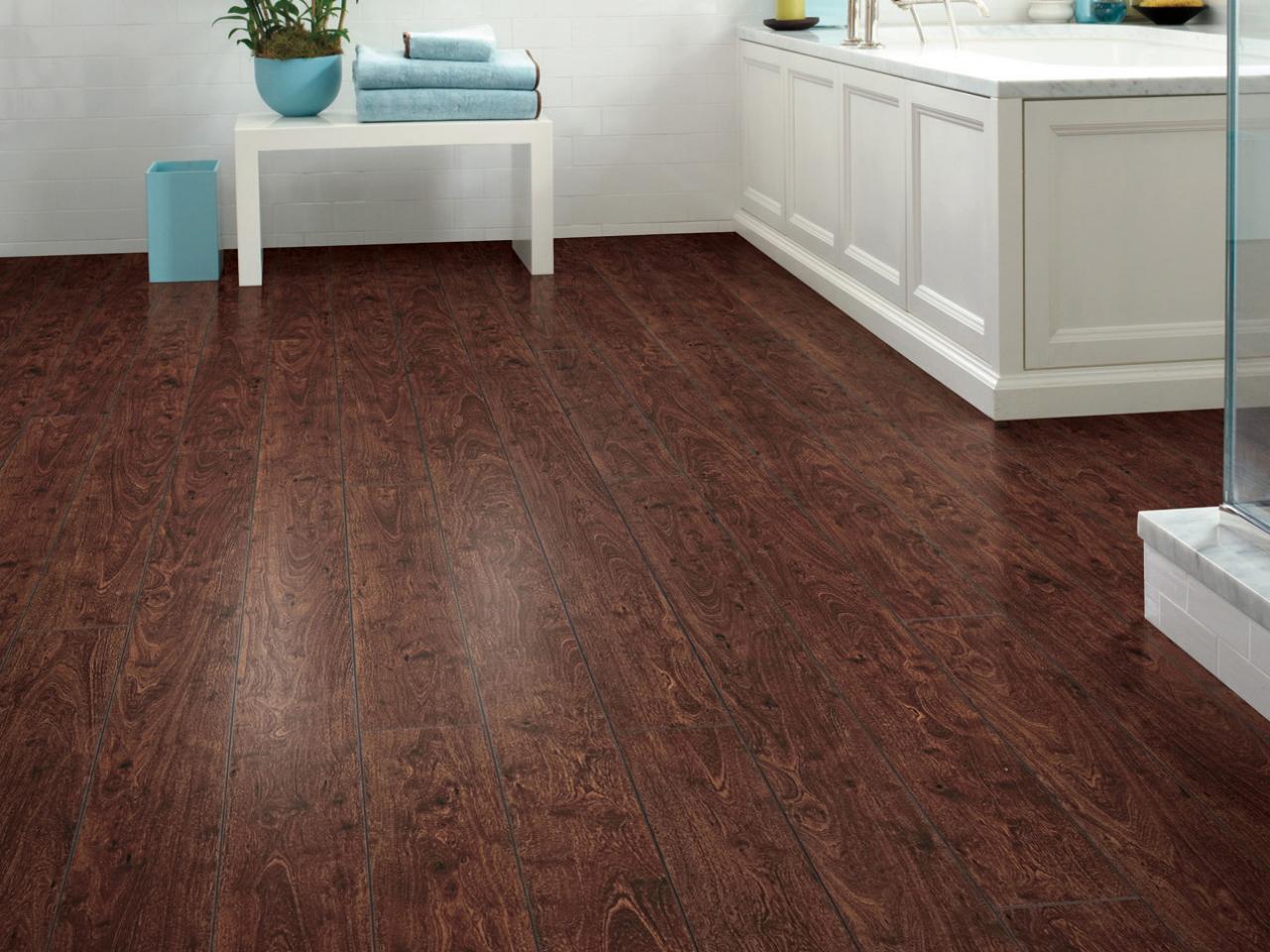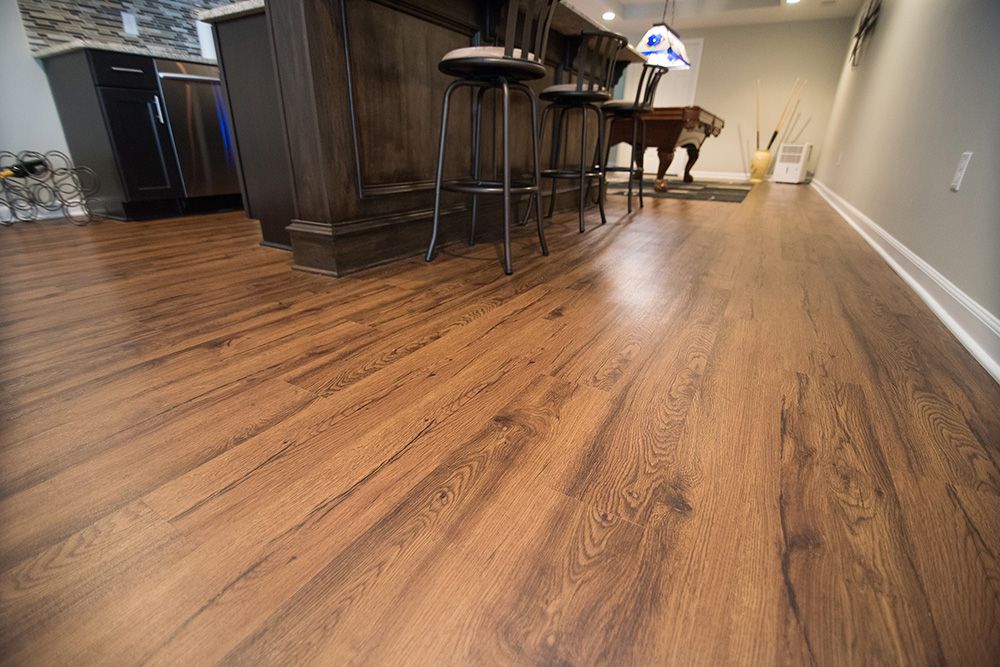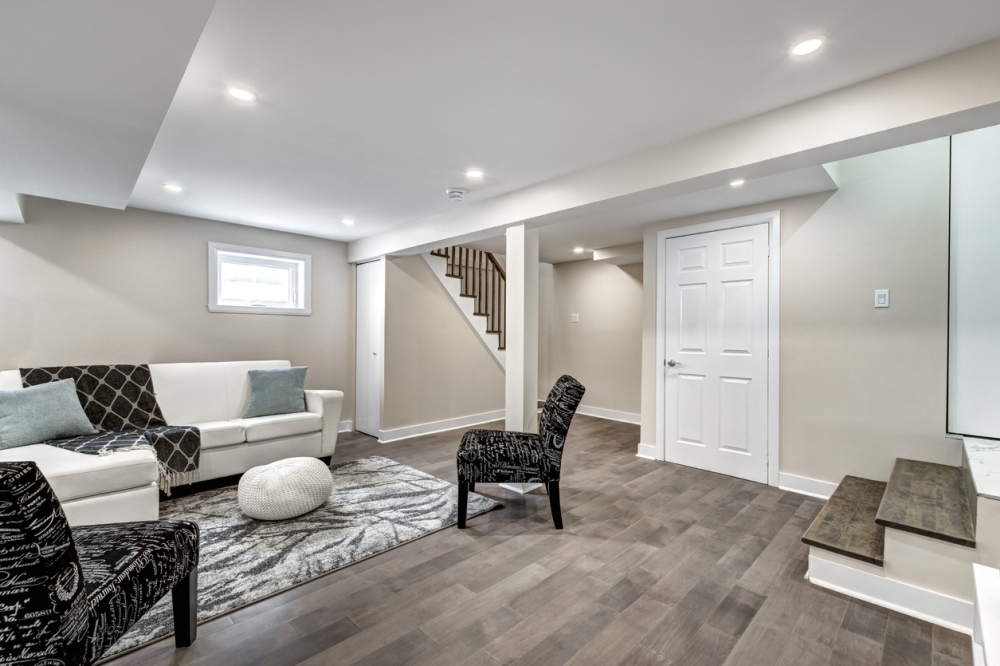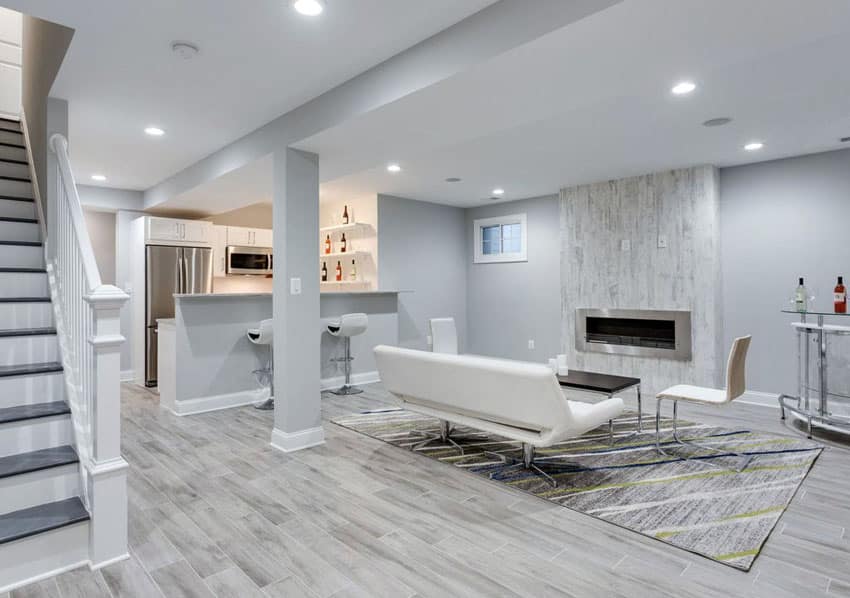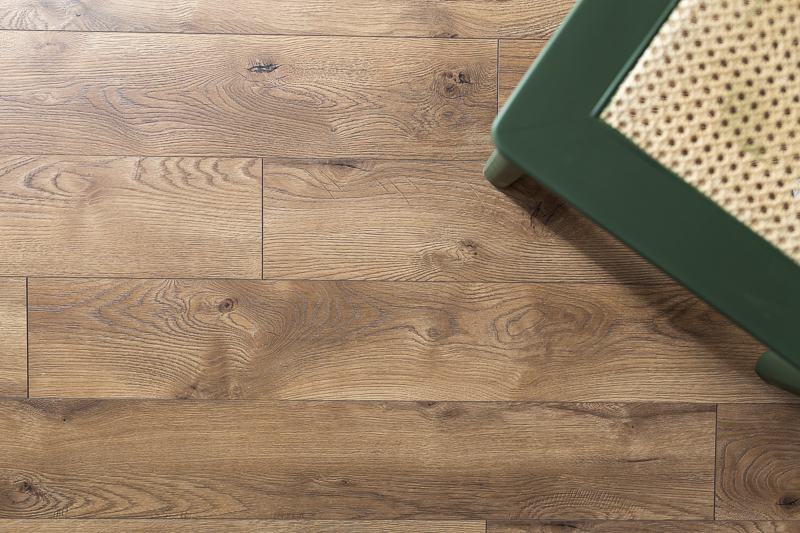Why Choose Laminate Flooring for Your Basement?
When it comes to choosing the right flooring for your basement, the options can be overwhelming. However, laminate flooring often stands out as a top choice for many homeowners. Let’s find out why laminate flooring might be the perfect fit for your basement.
- Affordability: One of the most compelling reasons to choose laminate flooring for your basement is its cost-effectiveness. Compared to hardwood or tile, laminate offers a high-end look without the hefty price tag. This makes it an ideal choice for those looking to renovate their basement on a budget.
- Durability: Basements are prone to moisture and temperature fluctuations, which can wreak havoc on some flooring materials. Laminate flooring, however, is designed to withstand these conditions. Its multi-layer construction provides excellent resistance to scratches, dents, and wear, ensuring your floor looks great for years to come.
- Ease of Installation: Laminate flooring is known for its DIY-friendly installation process. Most laminate boards come with a click-and-lock design, making them easy to install without professional help. This not only saves money but also gives you the satisfaction of completing the project yourself.
- Aesthetic Versatility: With laminate flooring, you have a plethora of design options. Whether you prefer the look of natural wood, stone, or even tile, laminate can mimic these styles convincingly. This versatility allows you to create a basement space that reflects your taste and style.
- Low Maintenance: Another advantage of laminate flooring is its low maintenance requirements. Unlike carpets that can harbor dust and allergens or hardwood that needs regular polishing, laminate floors are easy to clean. A simple sweep and occasional damp mop are usually all it takes to keep them looking pristine.
- Health Benefits: Laminate flooring can contribute to a healthier home environment. Unlike carpets, which can trap dust, mold, and allergens, laminate is hypoallergenic. Its hard surface doesn’t absorb dust and can be easily cleaned, promoting better indoor air quality.
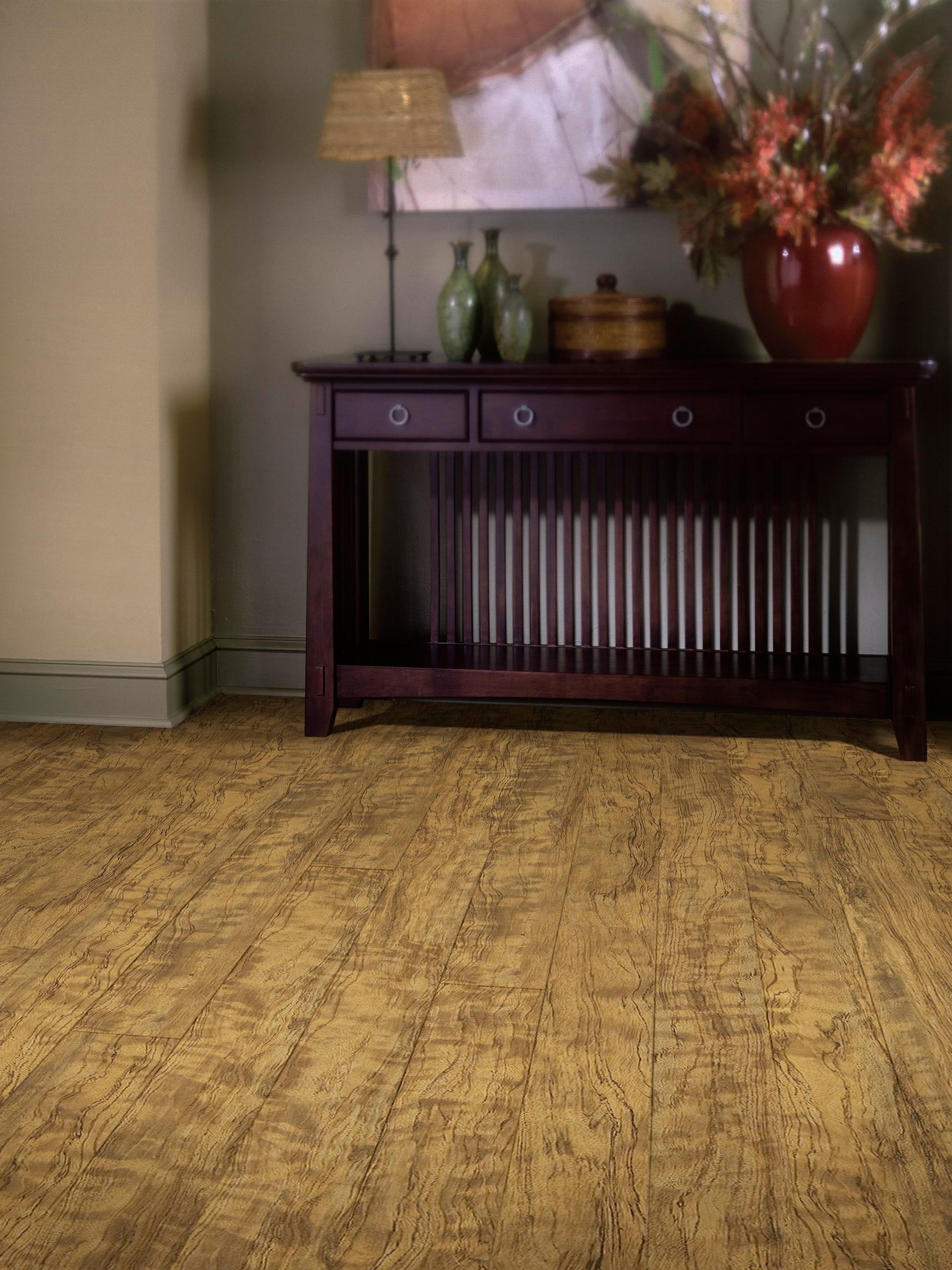
Understanding the Types of Laminate Flooring
Laminate flooring comes in a variety of styles and types, each with its unique features and benefits. To make an informed decision for your basement, it’s crucial to understand the different types available. Here’s a comprehensive guide to help you navigate the options.
High-Pressure Laminate (HPL): This type of laminate is known for its exceptional durability. HPL is made by bonding several layers of material at high pressure, resulting in a robust and resilient floor. It’s ideal for high-traffic areas and basements prone to heavy use, as it can withstand significant wear and tear.
Direct Pressure Laminate (DPL): DPL is the most common type of laminate flooring. It’s produced by fusing the layers at a lower pressure compared to HPL. While it may not be as durable as HPL, it still offers excellent resistance to scratches and dents. DPL is a cost-effective option that provides a good balance of performance and affordability.
Water-Resistant Laminate: For basements, water-resistant laminate flooring is a game-changer. These laminates are designed with a special core that resists moisture, making them suitable for areas with occasional dampness. They provide an added layer of protection against spills and humidity, ensuring your floor remains intact and beautiful.
Textured Laminate: If you want to add a touch of realism to your basement floor, consider textured laminate. These floors mimic the look and feel of natural materials like wood or stone. The textured surface not only enhances the aesthetic appeal but also provides a non-slip finish, making it safer for use in basements.
Embossed Laminate: Embossed laminate flooring features a textured surface that closely resembles real wood grain. This type of laminate adds depth and character to your basement, making it look more luxurious and authentic. It’s a great option if you want to achieve a high-end look without the high-end price.
Wide Plank Laminate: Wide plank laminate flooring is a popular choice for basements because of its contemporary and spacious appearance. The broader planks create a sense of openness, making smaller basements appear larger. This style is perfect for modern designs and adds a touch of elegance to any basement space.
Pros and Cons of Laminate Flooring in Basements
Laminate flooring is a popular choice for basements due to its many advantages, but it’s important to weigh both the pros and cons before making a decision. Here’s a detailed look at the benefits and potential drawbacks of using laminate flooring in your basement.
Pros:
Affordability: One of the primary benefits of laminate flooring is its cost-effectiveness. It offers the look of more expensive materials like hardwood or stone at a fraction of the cost. This makes it an attractive option for homeowners looking to renovate their basement without breaking the bank.
Durability: Laminate flooring is known for its durability. It’s resistant to scratches, dents, and stains, making it a suitable choice for high-traffic areas like basements. Its multi-layer construction ensures it can withstand the wear and tear of everyday use.
Water Resistance: Many laminate floors are designed to be water-resistant, which is crucial for basements that are prone to moisture. While not completely waterproof, water-resistant laminates provide a good level of protection against spills and humidity, helping to prevent damage.
Ease of Installation: Laminate flooring is relatively easy to install, thanks to its click-and-lock design. This makes it a great DIY project for homeowners who want to save on installation costs. The process is straightforward and doesn’t require specialized tools or skills.
Aesthetic Appeal: With a wide variety of styles, colors, and textures available, laminate flooring can mimic the look of natural wood, stone, or tile. This versatility allows you to achieve the desired aesthetic for your basement, whether it’s rustic, modern, or traditional.
Low Maintenance: Laminate flooring is easy to maintain. Regular sweeping and occasional damp mopping are usually sufficient to keep it looking clean and fresh. It doesn’t require waxing or polishing, which saves time and effort in the long run.
Cons:
Moisture Sensitivity: While laminate flooring is water-resistant, it’s not completely waterproof. Prolonged exposure to moisture can cause the planks to swell and warp. Basements with high humidity or frequent water issues may not be the best environment for laminate flooring.
Noise: Laminate flooring can be noisy underfoot, especially in a basement. Without proper underlayment, it can produce a hollow sound when walked on. This can be mitigated with the use of soundproofing materials, but it’s an additional consideration.
Temperature Fluctuations: Basements often experience temperature fluctuations, which can affect laminate flooring. Extreme changes in temperature can cause the planks to expand or contract, potentially leading to gaps or buckling.
Resale Value: While laminate flooring can enhance the look of your basement, it doesn’t add as much resale value to your home as hardwood or tile. Potential buyers may prefer more traditional flooring options, which could impact the overall value of your property.
Limited Lifespan: Compared to hardwood or tile, laminate flooring has a shorter lifespan. Even with proper care, it may need to be replaced after 10-20 years, depending on the level of traffic and maintenance.
Synthetic Appearance: Despite advancements in design, some people feel that laminate flooring still lacks the authentic look and feel of natural materials. The synthetic appearance might not appeal to everyone, especially those who prefer the look of real wood or stone.
Preparation: Ensuring Your Basement is Ready for Laminate Flooring
Before installing laminate flooring in your basement, proper preparation is crucial to ensure a successful and long-lasting installation. Here are some essential steps to take to get your basement ready for laminate flooring.
Assess Moisture Levels: Basements are notorious for moisture issues, which can affect the longevity of laminate flooring. Start by checking the moisture levels in your basement. Use a moisture meter to measure the humidity in the concrete floor. Ideally, the moisture content should be below 4%. If it’s higher, you’ll need to address the moisture problem before proceeding with installation.
Address Moisture Issues: If your basement has moisture problems, take steps to mitigate them. This may include sealing any cracks in the foundation, installing a vapor barrier, or using a dehumidifier to control humidity levels. Properly addressing moisture issues will help prevent damage to your laminate flooring and ensure it lasts for years.
Clean and Level the Floor: A clean and level surface is essential for a successful laminate flooring installation. Remove any debris, dirt, or old flooring materials. Sweep and vacuum the floor thoroughly. Check for any uneven spots or high areas and level them using a self-leveling compound. A smooth, clean surface ensures the laminate planks will lay flat and lock together properly.
Install a Vapor Barrier: Even if moisture levels are within acceptable ranges, it’s a good idea to install a vapor barrier. This protective layer helps prevent any residual moisture from reaching the laminate flooring. Lay the vapor barrier over the entire floor, overlapping the seams by a few inches, and secure it with waterproof tape.
Acclimate the Laminate Flooring: Laminate flooring needs to acclimate to the room’s temperature and humidity before installation. Bring the laminate planks into the basement and let them sit for at least 48 hours. This allows the material to adjust to the environment, reducing the risk of expansion or contraction after installation.
Gather Tools and Materials: Before you start the installation process, make sure you have all the necessary tools and materials on hand. This includes a tape measure, spacers, saw, underlayment, vapor barrier, laminate planks, and any other installation accessories. Having everything ready will make the installation process smoother and more efficient.
Step-by-Step Installation Guide
Installing laminate flooring in your basement can be a rewarding DIY project. Follow this step-by-step guide to ensure a successful installation and achieve a professional-looking result.
Prepare the Subfloor: Before starting the installation, ensure the subfloor is clean, dry, and level. Remove any debris, dust, or old flooring materials. Use a self-leveling compound to fill in any low spots or uneven areas. A smooth and level subfloor is crucial for a flawless installation.
Lay the Vapor Barrier: To protect your laminate flooring from potential moisture, install a vapor barrier over the entire subfloor. Roll out the vapor barrier, overlapping the seams by a few inches, and secure them with waterproof tape. This barrier will help prevent moisture from seeping through and damaging the laminate.
Install the Underlayment: Underlayment provides additional cushioning and soundproofing for your laminate flooring. Roll out the underlayment over the vapor barrier, making sure it covers the entire floor. Trim the edges to fit and secure the seams with tape. The underlayment will create a smooth surface for the laminate planks.
Plan the Layout: Before laying the first row of laminate planks, plan the layout to ensure a balanced and visually appealing result. Measure the room and mark the centerline. This will help you start the installation in the middle of the room and work your way out, ensuring the planks are evenly distributed.
Install the First Row: Begin installing the first row of laminate planks along the longest wall. Place spacers between the planks and the wall to maintain an expansion gap. This gap allows the flooring to expand and contract with changes in temperature and humidity. Lock the planks together using the click-and-lock mechanism, making sure they are tightly aligned.
Continue the Installation: Continue installing the laminate planks row by row. Stagger the seams of the planks to create a more natural and visually appealing look. Use a tapping block and a mallet to ensure the planks are securely locked together. Trim the last row of planks to fit, leaving the expansion gap along the wall.
Install Baseboards and Transitions: Once all the laminate planks are installed, remove the spacers and install baseboards along the walls to cover the expansion gaps. Use finishing nails to secure the baseboards in place. Install transition strips at doorways and other areas where the laminate flooring meets other types of flooring.
Clean and Inspect: After the installation is complete, clean the floor to remove any dust or debris. Inspect the entire floor to ensure all planks are securely locked and there are no gaps or loose areas. Make any necessary adjustments to ensure a flawless finish.
Maintenance Tips
Proper maintenance is essential to keep your laminate basement floors looking great and lasting for years. Here are some practical tips to help you maintain your laminate flooring and ensure its longevity.
Regular Cleaning: Regular cleaning is crucial to maintain the appearance of your laminate floors. Sweep or vacuum the floor regularly to remove dust, dirt, and debris. Use a soft-bristle broom or a vacuum cleaner with a hard floor attachment to avoid scratching the surface. This prevents dirt from accumulating and scratching the laminate.
Damp Mopping: For a deeper clean, use a damp mop with a laminate floor cleaner. Avoid using excessive water, as laminate flooring is sensitive to moisture. Wring out the mop thoroughly before use and make sure the floor dries quickly. Alternatively, you can use a microfiber mop, which is effective at picking up dirt without leaving excess moisture.
Spill Management: Promptly clean up spills to prevent moisture damage. Wipe up any liquid spills immediately with a dry cloth or paper towel. Avoid using wet or steam mops, as they can cause the laminate to swell or warp. For sticky or stubborn spills, use a damp cloth and a mild cleaning solution, then dry the area thoroughly.
Protective Measures: Place doormats at entrances to reduce the amount of dirt and debris tracked onto the laminate floor. Use felt pads under furniture legs to prevent scratches and dents. Avoid dragging heavy furniture across the floor; instead, lift and move it to prevent damage. These protective measures help preserve the integrity of your laminate flooring.
Preventing Sun Damage: Prolonged exposure to direct sunlight can cause laminate flooring to fade or discolor. Use curtains, blinds, or UV-protective window film to limit sun exposure. Rearrange furniture periodically to prevent uneven fading. This will help maintain the floor’s original color and appearance.
Repairing Minor Damage: Minor scratches and dents can occur over time, but they are often repairable. For small scratches, use a laminate floor repair kit or a color-matched marker to fill in the damaged area. For deeper scratches or dents, you may need to replace the affected plank. Having spare planks from the original installation can be helpful for such repairs.
Comparing Laminate to Other Basement Flooring Options
Choosing the right flooring for your basement involves comparing various options to find the best fit for your needs. Here’s a comparison of laminate flooring with other popular basement flooring options to help you make an informed decision.
Laminate vs. Carpet: Carpet is a common choice for basements due to its warmth and comfort. However, laminate flooring offers several advantages over carpet. Laminate is easier to clean and maintain, as it doesn’t trap dust, dirt, and allergens like carpet does. It’s also more durable and resistant to stains and wear. While carpet provides a soft and cozy feel, laminate offers a cleaner and more modern look.
Laminate vs. Vinyl: Vinyl flooring is another popular option for basements, especially due to its water resistance. Both laminate and vinyl are affordable and easy to install. However, vinyl is more waterproof than laminate, making it a better choice for basements prone to moisture. On the other hand, laminate flooring offers a more realistic wood or stone appearance and a wider variety of styles and textures.
Laminate vs. Tile: Tile is known for its durability and water resistance, making it a suitable choice for basements. However, laminate flooring has its own set of advantages. It’s generally more comfortable underfoot than tile, which can be cold and hard. Laminate is also easier to install and typically more cost-effective than tile. While tile offers a classic and elegant look, laminate provides a versatile and budget-friendly alternative.
Laminate vs. Hardwood: Hardwood flooring is prized for its natural beauty and timeless appeal. However, it’s not always the best choice for basements due to its sensitivity to moisture. Laminate flooring, while not as prestigious as hardwood, is more resistant to moisture and temperature fluctuations, making it more suitable for basement environments. Laminate also mimics the look of hardwood at a lower cost and with easier maintenance.
Laminate vs. Concrete: Concrete floors are often used in basements for their durability and low maintenance. However, they can be cold, hard, and less visually appealing. Laminate flooring offers a warmer and more inviting look while still being durable. It’s also easier to install and more comfortable underfoot compared to concrete. While concrete is a practical choice, laminate provides a more aesthetically pleasing option.
Laminate vs. Engineered Wood: Engineered wood flooring combines the beauty of hardwood with improved moisture resistance. It’s a good option for basements, but it’s typically more expensive than laminate. Laminate flooring offers a similar appearance at a lower cost and is easier to install and maintain. While engineered wood provides a higher-end look, laminate is a practical and budget-friendly alternative.
What Are The Best Flooring For Basement In Homes
Our first DIY project – laminate flooring in basement office
Basement Flooring Ideas (Best Design Options) – Designing Idea
Why we installed Select Surfaces Laminate Floors in our Basement
Related Posts:
- Grey Vintage Oak Laminate Flooring
- Dark Laminate Flooring Living Room
- Cheap Walnut Laminate Flooring
- Designer Choice Laminate Flooring
- Laminate Flooring Around Stairs
- Laminate Flooring Brick Pattern
- Black Gray Laminate Flooring
- Satin Walnut Laminate Flooring
- Laminate Floor Leveling
- Dark Oak Effect Laminate Flooring
